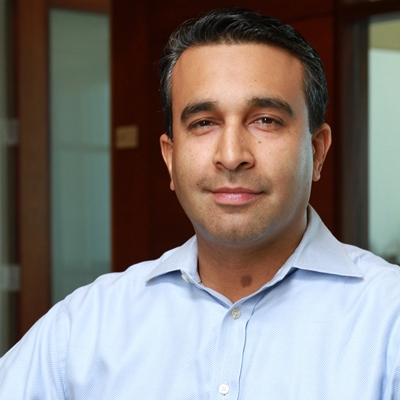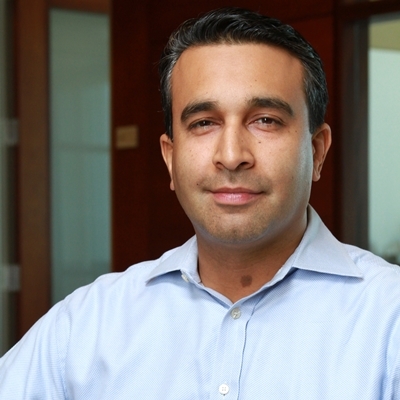 TrustRadius published a survey indicating a sharp decrease in marketing technology software spending in the weeks after the surge of coronavirus cases. This could be bad news for B2B marketers, who are seeking to sell solutions but may not be able to in the face of slashed budgets.
TrustRadius published a survey indicating a sharp decrease in marketing technology software spending in the weeks after the surge of coronavirus cases. This could be bad news for B2B marketers, who are seeking to sell solutions but may not be able to in the face of slashed budgets.
Demand Gen Report spoke with Vinay Bhagat, Founder and CEO of TrustRadius to discuss the research and to get a sense of how the COVID-19 crisis will impact marketing budgets over the course of the next year. While the initial statistics are grim, there is hope: Spending is projected to go back to previous levels by the spring of 2021.
Demand Gen Report: Do you have any insight as to why, at this moment, marketing software is perceived as less essential or needs additional scrutiny?
Vinay Bhagat: I think if you look at B2B as a category, whenever there is a crisis, the priority of things that people focus on shift, and sometimes there will be an overreaction. Marketing is one of those easy areas to pull back because there’s less emphasis on growth and more emphasis on shoring up your current business. The areas that have seen growth in technology since COVID have primarily been around helping businesses prepare the workforce to work in a remote environment. So that’s where you’ve seen most the growth. Because there’s less emphasis on growing net-new customers at this point, sales technology and marketing technology have taken a backseat temporarily. Now, as the market starts to recover, there’s no certainty today around how it will bounce back. Most people tend to believe it’s going to be a U-shaped recovery, meaning it’s not going to be an immediate snapback. There is a lot of debate about whether that’s going to be this year or next year. You will see a resurgence of spending on martech and sales technology, as people want to get a competitive edge to grow again.
DGR: Is reducing marketing budget the start of a more permanent trend, or is this whole situation more of an aberration? Will things go back to the status quo?
Bhagat: I think it’s a mixture. I think there are some effects right now, like the big slowdown on martech expenditure, that are an aberration. It may be a six- or twelve-month aberration, not another blip. I do think spending will return to prior levels again. Most people surveyed do expect spending levels to return to prior levels by 2021. I think the reason why you see a drop is because psychologically, people are still seeing no immediate benefit of social distancing. I think there will be some categories of technology and marketing strategies that will be forever changed. When it comes to marketing, I think one of the things that will be a permanent change is the emphasis on digital.
As physical events have gone away, companies had to find other ways to engage with their prospects in ways that facilitate peer-to-peer exchanges of information. We believe that strategies around enabling your customers to talk to you in a digital environment are going to be critical strategies in order to help you build trust with prospects. Whereas in the past, you might have relied on a lot of face-to-face interaction through salespeople or physical interaction at physical events.
DGR: Is this shift especially challenging for mid-sized companies?
Bhagat: I think it causes focus and it causes disruptive innovation. You’re going to have to do a lot more with a lot less, whether you’re a small business or a midsize company. And frankly, there’s some pressure on enterprises to do more with less, as well. But the pain is much more acute at midsize companies where budgets are being slashed. But expectations are not being slashed by the same degree. What that breeds are survivors that are going to be the ones that react strategically. That may mean they change their market focus. We ourselves have found less appetite for our services and small businesses. We’ve changed our focus to concentrate more on the enterprise and larger business side of things that still seem to have large robust budgets to buy our services.
We believe that marketers are going to be charged with being more efficient with how they do things like demand generation, and how they enable their sales team to be more effective. One example is advertising: In the past, you might have done broad-brush advertising based on a target persona, using a whole variety of channels like LinkedIn, pay-per-click, etc. I think in the new environment, people are going to measure ROI a lot more concretely on different marketing channels and double down on the ones that really work.
DGR: What types of strategies do you see trending in marketing today?
Bhagat: One strategy that I see taking off in this market right now is the use of intent data. Intent data is a signal on who is in market at a company level. Then sales and marketing can engage with those companies to identify the contacts who are buying in the account and focus their marketing efforts on them.
Another area is conversion optimization. A lot of times, marketers advertise to drive people to their website conversions, but they don’t spend enough energy on conversion. I think every business now must pay strong attention to conversion optimization. I don’t think it’s a death knell, but I think it is a strong call to action around being a lot more effective and efficient at your marketing.
DGR: What advice would you give B2B marketers struggling to tackle the current situation?
Bhagat: There are two points. One is to realize that buyers are going digital in a big way, and that’s the medium where you need to reach them. But it’s critical to have the relevant message that works today. Number two is to prove relevancy and focus on ROI through the words of your customers. Buyers trust your customers more than they trust you. They trust simple language from the voice of their peers more than they trust marketing speak. In order to prove your relevancy and justify why you are someone they should pay attention to, you need to harness the voice of your customers to create trust. Really focus on conversion optimization using things such as intent data to focus your ad efforts. Then, in these times, support customer retention and expansion as well as acquisition. When you think about the whole pie of revenue at a company, making sure your current customers stick is job one. When it comes to growing revenue, it’s often easier to expand revenue from current customers than it is to acquire new customers. Are you doing everything you can to support retention and expansion?







